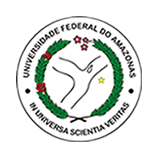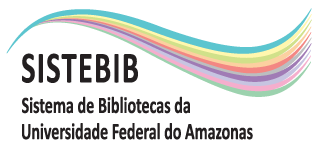| ???jsp.display-item.social.title??? |


|
Please use this identifier to cite or link to this item:
https://tede.ufam.edu.br/handle/tede/10217Full metadata record
| DC Field | Value | Language |
|---|---|---|
| dc.creator | Barbosa, Leonardo Mendes | - |
| dc.creator.Lattes | https://lattes.cnpq.br/6160700991647637 | eng |
| dc.contributor.advisor1 | Santos, João Otacilio Libardoni dos | - |
| dc.contributor.advisor1Lattes | http://lattes.cnpq.br/1487941865277973 | eng |
| dc.contributor.referee1 | Estrazulas, Jansen Atier | - |
| dc.contributor.referee2 | Rossato, Mateus | - |
| dc.date.issued | 2024-01-31 | - |
| dc.identifier.citation | BARBOSA, Leonardo Mendes. Características antropométricas, de potência muscular e cinemáticas de atletas com deficiência visual e seus respectivos guias de provas de 100 m: um estudo de caso. 2024. 39 f. Dissertação (Mestrado em Ciências do Movimento Humano) - Universidade Federal do Amazonas, Manaus (AM), 2024. | eng |
| dc.identifier.uri | https://tede.ufam.edu.br/handle/tede/10217 | - |
| dc.description.resumo | O objetivo desta pesquisa foi descrever as características antropométricas, de potência muscular e cinemáticos de atletas cegos e seus respectivos guias de provas de 100m rasos. Participaram deste estudo seis atletas do sexo masculino, sendo três com deficiência visual possuintes de classificação T11 e T12 e três sem deficiência visual participantes das provas de pistas de 100 metros rasos a nível nacional e internacional. Os dados foram analisados por meio da estatística descritiva e apresentados em tabelas e gráficos. Nas considerações finais os resultados observados neste estudo trazem informações que levam a destacar pontos importantes acerca das diferenças de velocidade e aceleração com as possíveis influências dos fatores antropométricos e atributos físicos entre velocistas paralímpicos com deficiência visual e seus respectivos guias. Nesse sentido, as diferenças antropométricas intrínsecas entre as duplas não demonstraram grandes variações. Porém, essas pequenas diferenças foram maiores para os atletas guias de forma geral. Já em relação a potência de membros inferiores, os resultados deste estudo levantaram suposições de que as diferenças de potência de membros inferiores superiores a 10% em prol do atleta cego pode ser um fator preponderante para piores desempenhos de prova. Os achados deste estudo demonstram a necessidade de identificar de uma forma mais minuciosa os limites aceitáveis das diferenças e ainda os momentos em que estas diferenças podem comprometer mais intensamente o resultado da prova. A pequena gama de estudos envolvendo comportamento cinemático e atributos físicos em velocistas com deficiência visual e seus respectivos guias, quando associados os melhores tempos alcançados em prova entre as duplas e ter como base as zonas de diferenças e tempo de alcance do PmáxV, manutenção dos níveis de aceleração e velocidade em prol do atleta em competição real, não temos como referências para comparar nossos resultados. Tais observações são novas para o conhecimento e realça a necessidade de mais investigações (transversais e longitudinais) para melhor elucidar os achados e principalmente aprimorar o treinamento visando a melhores resultados. | eng |
| dc.description.abstract | The objective of this research was to describe the anthropometric, muscular power and kinematic characteristics of blind athletes and their respective guides in 100m sprint events. Six male athletes participated in this study, three with visual impairments classified as T11 and T12 and three without visual impairments participating in 100-meter track events at national and international level. The data were analyzed using descriptive statistics and presented in tables and graphs. In final considerations, the results observed in this study provide information that leads to highlighting important points about the differences in speed and acceleration with the possible influences of anthropometric factors and physical attributes between Paralympic sprinters with visual impairments and their respective guides. In this sense, the intrinsic anthropometric differences between the pairs did not demonstrate great variations. However, these small differences were greater for guide athletes in general. Regarding lower limb power, the results of this study raised assumptions that differences in lower limb power greater than 10% in favor of the blind athlete may be a preponderant factor for worse race performance. The findings of this study demonstrate the need to identify in more detail the acceptable limits of differences and also the moments in which these differences can more intensely compromise the result of the test. The small range of studies involving kinematic behavior and physical attributes in visually impaired sprinters and their respective guides, when associated with the best times achieved in the race between the pairs and based on the zones of differences and time to reach PmaxV, maintenance of levels of acceleration and speed for the athlete in real competition, we do not have references to compare our results. Such observations are new to knowledge and highlight the need for more investigations (cross-sectional and longitudinal) to better elucidate the findings and mainly improve training aiming for better results. | eng |
| dc.format | application/pdf | * |
| dc.thumbnail.url | https://tede.ufam.edu.br/retrieve/76151/DISS_LeonardoBarbosa_PPGCIMH.jpg | * |
| dc.language | por | eng |
| dc.publisher | Universidade Federal do Amazonas | eng |
| dc.publisher.department | Faculdade de Educação Física e Fisioterapia | eng |
| dc.publisher.country | Brasil | eng |
| dc.publisher.initials | UFAM | eng |
| dc.publisher.program | Programa de Pós Graduação em Ciências do Movimento Humano | eng |
| dc.rights | Acesso Aberto | - |
| dc.rights.uri | https://creativecommons.org/licenses/by-nc-nd/4.0/ | por |
| dc.subject | . | por |
| dc.subject | . | por |
| dc.subject | . | por |
| dc.subject.cnpq | OUTROS | eng |
| dc.title | Características antropométricas, de potência muscular e cinemáticas de atletas com deficiência visual e seus respectivos guias de provas de 100 m: um estudo de caso | eng |
| dc.title.alternative | Anthropometric characteristics, muscle power and kinematics of athletes with visual impairment and their respective 100m test guides: a case study | eng |
| dc.type | Dissertação | eng |
| dc.subject.user | Atletismo Paralímpico | por |
| dc.subject.user | Velocistas cegos | por |
| dc.subject.user | Atleta guia | por |
| dc.subject.user | Atributos físicos | por |
| dc.subject.user | Comportamento cinemático | por |
| Appears in Collections: | Mestrado em Ciências do Movimento Humano | |
Files in This Item:
| File | Description | Size | Format | |
|---|---|---|---|---|
| DISS_LeonardoBarbosa_PPGCIMH | 965.36 kB | Adobe PDF |  Download/Open Preview |
Items in DSpace are protected by copyright, with all rights reserved, unless otherwise indicated.




